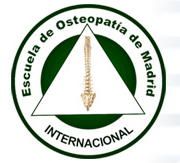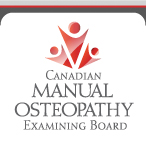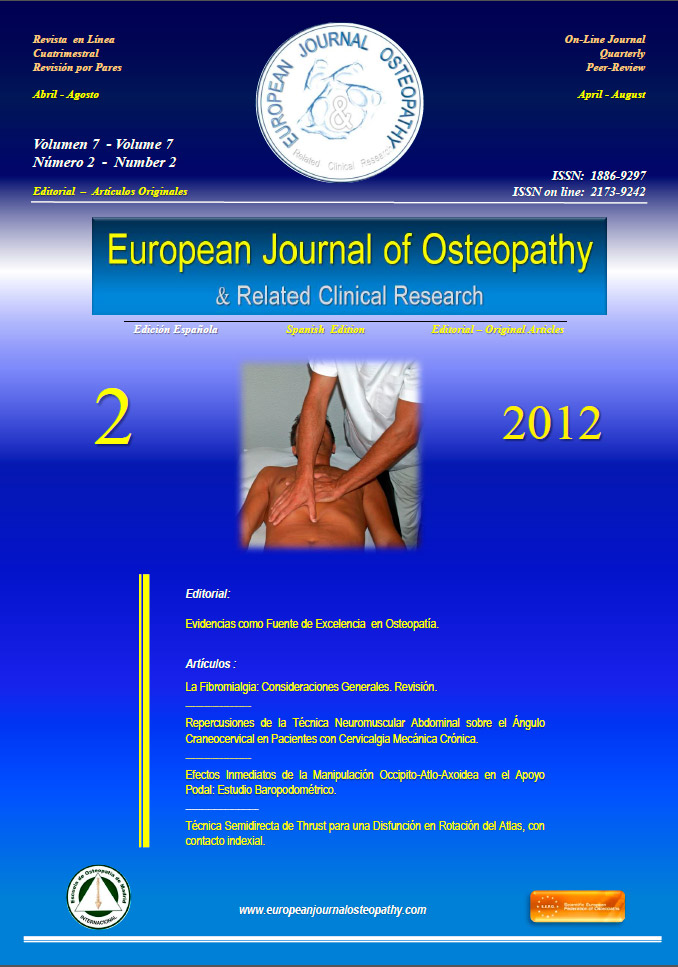A Conversation about the Feldenkrais Method® with Master Teacher Maxine Davis
By Jill Anna Ponasik
I climbed the brownstone’s steps and rang the buzzer for apartment 4. Feldenkrais® teacher Maxine Davis welcomed me into her cozy apartment with a gentle smile and a smidgen of anxiety about our task for the day: to come up with a plan for a series of four articles on the Feldenkrais Method of somatic education. She settled into the sofa cushions, legs tucked beneath her frame. I found a spot at her worktable.
We decided to start at the beginning.
“What happens if we redefine what it means to prepare?”
Do we need to? As singers, aren’t we experts at the art of preparation? Isn’t that what those endless hours of coaching and practicing are for—so that we can be ready?
“Many times, people are so eager to leap into the act of singing that it’s like holding back wild horses just to ask them to notice, ‘Am I ready to approach this note?’ ‘Is the pitch clearly in my ear?’ ‘Do I have that easy sense of breath?’ When we sing, we sometimes worry that we have to perform, rather than just being engaged in a process.”
I thought about some of my own lessons, of conversations with friends. I thought about the idea that, as singers, on some level we understand that we must be prepared to move. We want the sounds coming from our bodies to float, pierce, spin, and ring. We want our muscles to be easy and free, and yet, what many of us do, over and over again, is hold on for dear life.

What we want is freedom. What we get is a cage. And what do we do with all of that energy and excess effort? It doesn’t simply evaporate into thin air. It finds its way to our muscles, our tendons, our joints, and our voices—exactly where we don’t want it to be.
I asked Davis how we’re supposed to take notice of all those things without freezing them in place or holding on with excessive tension.
“Look, right now, you’re sitting in that chair and what do you notice?”
I easily and quickly noticed some construction sounds, the music on the radio, and the feeling of air from a fan blowing on me.
“So, are you frozen in place?”
“No.” Aha. I see the point.
“I’m talking about the same awareness. You hold the intention that you’re about to sing, but it doesn’t have to be any different than feeling the chair that you’re sitting on, or feeling the pen in your hand. Preparation can be as simple as taking a little time to define what elements need to be present to execute your intention.”
I’m new to the Feldenkrais Method, but I could tell immediately that this was making intuitive sense to me, and also, that it was significantly different than other educational models I’d encountered.
Moshe Feldenkrais was born in Slavuta, Ukraine at the beginning of the 20th century. The chapters of his life are eclectic. He worked as a laborer, cartographer, nuclear physicist, and engineer. He was a dedicated athlete in gymnastics, soccer, and the martial arts, especially judo. After injuring his knee in a soccer game, he declined surgery and instead, used his own body as a laboratory to study kinesiology, anatomy, and physiology. Over time, he retaught himself to walk, and in the process, developed the Feldenkrais Method, which he described as “a system for accessing the power of the central nervous system to improve human functioning.”
As a teacher, Davis has often observed a significant difference between what students think they are doing and what they are actually doing. Much of her job is helping them acquire an improved awareness of what they are actually doing, so that they can do more of what they want. In other words, she helps students alter habitual ways of moving and thinking that may be limiting their success.
“I might have somebody sing, and then I watch and listen. I may see that the way they take their breath sets up a whole series of problems—and they think these are their problems. At that point, I might give them four different ways to breathe.”
Davis often helps students by taking them through a series of variations on a specific movement, in this case, the act of inhalation. “Engaging in the series of variations makes it more likely that they will happen upon the right desired coordination,” she explains. She may present one exercise and then another one, always focusing on the breath but never repeating the same exercise more than three or four times in a row, to avoid neurological fatigue. It provides for a spiraling, organic, playful way to learn that somewhat resembles the learning styles of young children. When we observe a small child, it may seem to us as if they’re engaging in random acts such as rolling, clapping, and crawling, but one day, those pieces assemble and they learn to walk. They play around until they learn what is necessary to progress.

“Try a variety of things until you find the optimal way to do what you’re doing. You’ll get all kinds of outcomes, but often what you’ll get is something a lot freer because you get out of your own way for a second,” says Davis. “Feldenkrais is a big one for saying that there are as many ways to breathe as there are positions you might find yourself in or tasks you might find yourself doing. Running is different than sitting or jumping. There is no fixed dogma. What we’re looking for is the readiness of the system to respond in a spontaneous way.”
My conversation with Davis continued to bounce about. We discussed brain plasticity and an article about innovation that had caught her attention in the New York Times. Her mind is curious, and her attitude, playful. Davis asks as many questions as she answers, and as she speaks her thoughts wind in and around the topics at hand. At some point, it occurred to me that such curiosity might be a hallmark of the Feldenkrais Method.
Interest in the workings of his own body helped Moshe Feldenkrais regain the use of his injured knee. Rather than simply accept expert advice and undergo surgery, which carried a risk of debilitation, he applied knowledge and curiosity to the problem. He spent time carefully developing his sensitivity and awareness until he could actively observe exactly what his body was doing. Once he accomplished that, he found the way to improvement wide open.
Davis began her career as a singer. She recalled for me one of her own voice lessons, before she began her study of the Feldenkrais Method.
“My teacher was trying to get me to go, ‘nea, nea, nea,’ in order to lift the soft palate. I simply couldn’t do it. Nothing she did, nothing she said made any difference. I could hear perfectly what she was talking about, and I would try and try, but my palate was going the opposite way. Now, I can lift the palate in all [kinds of] different ways, because I can feel how I do what I do. My newest discovery is that there is a whole relationship between being able to open the inner nostril and lifting the soft palate.”
There’s that curiosity at work again.
Davis has said that her first Feldenkrais lesson gave her a sense of being in a new world, one full of possibility and hope. Students say that they feel taller, lighter, and can breathe more freely after lessons. In the following months we’ll continue our conversations about the Feldenkrais Method and will dive into issues such as maintaining a sense of play during practice, differentiating between the learning process and the performing process, and developing the ability to observe yourself from a point of neutrality. I feel a bright trace of delight at the thought of the discussions to come.
We decided to start at the beginning.
“What happens if we redefine what it means to prepare?”
Do we need to? As singers, aren’t we experts at the art of preparation? Isn’t that what those endless hours of coaching and practicing are for—so that we can be ready?
“Many times, people are so eager to leap into the act of singing that it’s like holding back wild horses just to ask them to notice, ‘Am I ready to approach this note?’ ‘Is the pitch clearly in my ear?’ ‘Do I have that easy sense of breath?’ When we sing, we sometimes worry that we have to perform, rather than just being engaged in a process.”
I thought about some of my own lessons, of conversations with friends. I thought about the idea that, as singers, on some level we understand that we must be prepared to move. We want the sounds coming from our bodies to float, pierce, spin, and ring. We want our muscles to be easy and free, and yet, what many of us do, over and over again, is hold on for dear life.

What we want is freedom. What we get is a cage. And what do we do with all of that energy and excess effort? It doesn’t simply evaporate into thin air. It finds its way to our muscles, our tendons, our joints, and our voices—exactly where we don’t want it to be.
I asked Davis how we’re supposed to take notice of all those things without freezing them in place or holding on with excessive tension.
“Look, right now, you’re sitting in that chair and what do you notice?”
I easily and quickly noticed some construction sounds, the music on the radio, and the feeling of air from a fan blowing on me.
“So, are you frozen in place?”
“No.” Aha. I see the point.
“I’m talking about the same awareness. You hold the intention that you’re about to sing, but it doesn’t have to be any different than feeling the chair that you’re sitting on, or feeling the pen in your hand. Preparation can be as simple as taking a little time to define what elements need to be present to execute your intention.”
I’m new to the Feldenkrais Method, but I could tell immediately that this was making intuitive sense to me, and also, that it was significantly different than other educational models I’d encountered.
Moshe Feldenkrais was born in Slavuta, Ukraine at the beginning of the 20th century. The chapters of his life are eclectic. He worked as a laborer, cartographer, nuclear physicist, and engineer. He was a dedicated athlete in gymnastics, soccer, and the martial arts, especially judo. After injuring his knee in a soccer game, he declined surgery and instead, used his own body as a laboratory to study kinesiology, anatomy, and physiology. Over time, he retaught himself to walk, and in the process, developed the Feldenkrais Method, which he described as “a system for accessing the power of the central nervous system to improve human functioning.”
As a teacher, Davis has often observed a significant difference between what students think they are doing and what they are actually doing. Much of her job is helping them acquire an improved awareness of what they are actually doing, so that they can do more of what they want. In other words, she helps students alter habitual ways of moving and thinking that may be limiting their success.
“I might have somebody sing, and then I watch and listen. I may see that the way they take their breath sets up a whole series of problems—and they think these are their problems. At that point, I might give them four different ways to breathe.”
Davis often helps students by taking them through a series of variations on a specific movement, in this case, the act of inhalation. “Engaging in the series of variations makes it more likely that they will happen upon the right desired coordination,” she explains. She may present one exercise and then another one, always focusing on the breath but never repeating the same exercise more than three or four times in a row, to avoid neurological fatigue. It provides for a spiraling, organic, playful way to learn that somewhat resembles the learning styles of young children. When we observe a small child, it may seem to us as if they’re engaging in random acts such as rolling, clapping, and crawling, but one day, those pieces assemble and they learn to walk. They play around until they learn what is necessary to progress.

“Try a variety of things until you find the optimal way to do what you’re doing. You’ll get all kinds of outcomes, but often what you’ll get is something a lot freer because you get out of your own way for a second,” says Davis. “Feldenkrais is a big one for saying that there are as many ways to breathe as there are positions you might find yourself in or tasks you might find yourself doing. Running is different than sitting or jumping. There is no fixed dogma. What we’re looking for is the readiness of the system to respond in a spontaneous way.”
My conversation with Davis continued to bounce about. We discussed brain plasticity and an article about innovation that had caught her attention in the New York Times. Her mind is curious, and her attitude, playful. Davis asks as many questions as she answers, and as she speaks her thoughts wind in and around the topics at hand. At some point, it occurred to me that such curiosity might be a hallmark of the Feldenkrais Method.
Interest in the workings of his own body helped Moshe Feldenkrais regain the use of his injured knee. Rather than simply accept expert advice and undergo surgery, which carried a risk of debilitation, he applied knowledge and curiosity to the problem. He spent time carefully developing his sensitivity and awareness until he could actively observe exactly what his body was doing. Once he accomplished that, he found the way to improvement wide open.
Davis began her career as a singer. She recalled for me one of her own voice lessons, before she began her study of the Feldenkrais Method.
“My teacher was trying to get me to go, ‘nea, nea, nea,’ in order to lift the soft palate. I simply couldn’t do it. Nothing she did, nothing she said made any difference. I could hear perfectly what she was talking about, and I would try and try, but my palate was going the opposite way. Now, I can lift the palate in all [kinds of] different ways, because I can feel how I do what I do. My newest discovery is that there is a whole relationship between being able to open the inner nostril and lifting the soft palate.”
There’s that curiosity at work again.
Davis has said that her first Feldenkrais lesson gave her a sense of being in a new world, one full of possibility and hope. Students say that they feel taller, lighter, and can breathe more freely after lessons. In the following months we’ll continue our conversations about the Feldenkrais Method and will dive into issues such as maintaining a sense of play during practice, differentiating between the learning process and the performing process, and developing the ability to observe yourself from a point of neutrality. I feel a bright trace of delight at the thought of the discussions to come.
Article reprinted with permission from Classical Singer Magazine, October 2008 issue. To read the series, go to: http://www.maxinedavis.net/links.html
Maxine Davis has degrees in music education and performance. She is the recipient of a Fulbright-Hayes Fellowship and is a 1991 graduate of the NY Feldenkrais Professional Training Program. She has introduced the Feldenkrais Method to people at New York University, the New School, the 92nd St. Y, and the Chautauqua Institution. She teaches private Feldenkrais lessons and classes, as well as voice lessons informed by the Feldenkrais approach to learning, from her studio in New York City. Visit her online at http://www.maxinedavis.net.
Jill Anna Ponasik works as a singer-actor and sometimes, a writer. She is in the process of leaving her apartment on New York’s Upper East Side to inhabit an old farmhouse in Wauwatosa, WI. You can reach her online at http://www.jillannaponasik.com.








 4:47
4:47
 Daniel Enriquez de Guevara
Daniel Enriquez de Guevara




























.jpg)






















0 comentarios :
Publicar un comentario